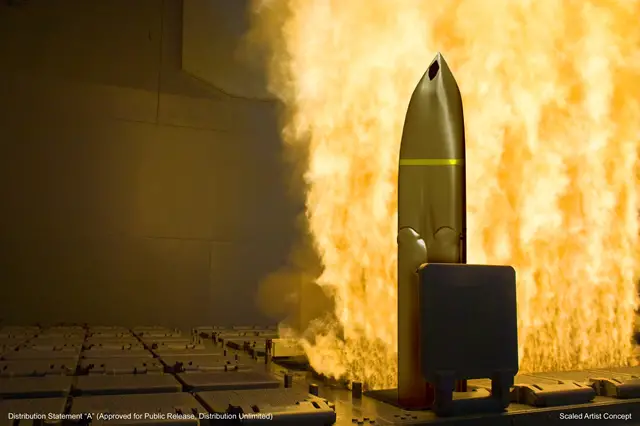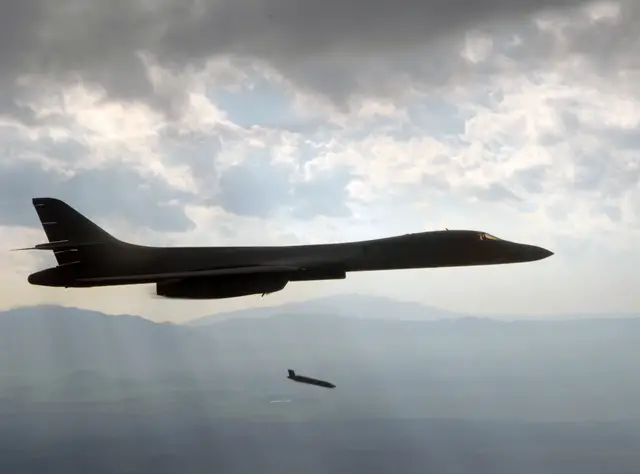|
|
| a |
Naval
Defense Industry News - USA |
| |
|
| |
| |
Lockheed
Martin Completes Captive Carry Tests with LRASM, Future U.S. Air Force
and Navy Missile |
| |
Lockheed
Martin recently completed a series of Long Range Anti-Ship Missile (LRASM)
captive carry flight tests at the Sea Range in Point Mugu, Calif., advancing
the research program toward its first missile release and free flight
test later this year. |
|

An LRASM launches from a VLS (Artist Impression)
(Picture: Lockheed Martin)
|
|
The captive
carry missions were flown aboard a U.S. Air Force B-1B from the 337th
Test and Evaluation Squadron at Dyess Air Force Base, Texas. The primary
mission objectives were to collect telemetry for post-flight analysis,
verify proper control room telemetry displays and simulate all the test
activities that will occur in later air-launched flight tests. All test
objectives were met.
“Collecting telemetry data while flying in the B-1B bomb bay significantly
reduces risk ahead of the first launch,” said Mike Fleming, LRASM
air launch program manager at Lockheed Martin Missiles and Fire Control.
“Initial assessments indicate the missile performed as expected.” |
|

A U.S. Air Force B-1B launches a JASSM. LRASM is based off the JASSM
and share the same body
(Picture: Lockheed Martin)
|
|
The LRASM
program is in development with the Defense Advanced Research Project
Agency (DARPA) and the Office of Naval Research. After a competition
in 2009, Lockheed Martin’s LRASM was selected to demonstrate air-
and surface-launched capability to defeat emerging sea-based threats
at significant standoff ranges.
LRASM is an autonomous, precision-guided anti-ship standoff missile
leveraging the successful Joint Air-to-Surface Standoff Missile Extended
Range (JASSM-ER) heritage, and is designed to meet the needs of U.S.
Navy and Air Force warfighters in a robust anti-access/area-denial threat
environment.
Armed with a proven 1,000-lb. penetrator and blast-fragmentation warhead,
LRASM employs a multi-mode sensor, weapon data link and an enhanced
digital anti-jam Global Positioning System to detect and destroy specific
targets within a group of ships. |